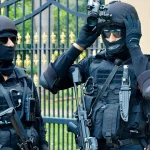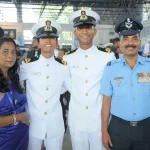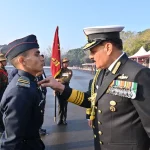Choosing a career is one of the most defining moments in an individual’s life, and within India, two of the most reputed and respected professions are that of an Army officer and an Indian Administrative Service (IAS) officer. Both professions play pivotal roles in the development and safeguarding of the nation, but they offer vastly different experiences, responsibilities, and lifestyles. Understanding the nuances between these two esteemed paths is crucial for aspirants aiming to align their career choices with their personal values, interests, and long-term aspirations.
This detailed exploration aims to dissect the roles, responsibilities, training, compensation, and overall experiences of Army officers and IAS officers, allowing readers to make an informed decision that resonates with their ambitions.
Historical Context
The Indian Armed Forces and the Indian Administrative Service have rich histories that reflect the evolution of governance and defence in India. The Indian Army, with its roots set deep within the historical fervour of the struggle for independence, has portrayed bravery and resilience throughout its existence. The need for a structured and organized military led to the establishment of various military academies in India, which not only shape defenders of the nation but also highlight the profound significance of discipline, leadership, and camaraderie.
Similarly, the IAS was instituted primarily during the British colonial era to support administrative governance. It has since evolved into a cadre that represents the backbone of India’s civil service. Post independence, the IAS has been fundamental in implementing policies, maintaining law and order, and promoting socio-economic development. These two professions, while distinct, collectively contribute to the nation’s integrity and growth.
Career Overviews
Army Officer
Role and Responsibilities
Army officers hold a fundamental role in securing the nation against external threats and are often the first responders in emergencies. Their responsibilities extend beyond merely leading troops; they are involved in:
- Planning and Executing Operations: Army officers actively engage in strategically planning and conducting military operations.
- Leadership: Leading soldiers in diverse terrains and situations fosters significant leadership qualities and decision-making skills.
- Logistics Management: Ensuring operational readiness involves handling logistics, resources, and planning for contingencies.
- Training and Mentorship: Officers are tasked with training and mentoring subordinates, ensuring the transfer of knowledge and skills within their ranks.
Training
The training period for Army officers varies depending on the selected entry scheme but generally ranges from 18-24 months:
- Indian Military Academy (IMA): Located in Dehradun, IMA is one of the premier military academies in the country, known for its rigorous training regimen.
- Officers Training Academy (OTA): Primarily for Short Service Commission (SSC) officers, the OTA also upholds high standards of military training, preparing individuals for leadership roles.
Ranks and Promotions
Army officers progress through various ranks that reflect their experience and leadership capabilities:
- Starting Rank: Lieutenant.
- Promotional Pathway: The rank structure progresses through Captain, Major, Lieutenant Colonel, Colonel, Brigadier, Major General, Lieutenant General, and finally, General.
Promotions are often based on merit, performance, and years of service, with senior positions involving significant strategic and decision-making responsibilities.
Compensation
The initial compensation for an Army officer is approximately ₹56,000 per month, enjoying numerous benefits such as:
- Military Service Pay (MSP): An additional allowance that complements the base salary.
- Free Rations: Ensuring that officers and their families have access to provisions at no cost.
- Travel Allowances: Financial support for relocations or duty travel.
IAS Officer
Role and Responsibilities
Unlike Army officers focused on national security, IAS officers play a critical role in managing the administration and governance of the country. Their responsibilities typically include:
- Policy Formulation: IAS officers contribute to the development and implementation of government policies.
- Public Administration: They oversee various departments, ensuring that public services are efficiently administered.
- Coordination: Act as a key liaison between the government and the public, addressing grievances and promoting welfare measures.
- Crisis Management: IAS officers often manage disasters and ensure effective public responses during emergencies.
Training
After clearing the Civil Services Examination, IAS recruits undergo a comprehensive training program:
- Lal Bahadur Shastri National Academy of Administration (LBSNAA): Located in Mussoorie, this academy provides one-year training that includes classroom learning, field visits, and practical exposure to administrative functions.
Ranks and Promotions
The hierarchy within the IAS allows for substantial growth, with promotions based on experience and performance:
- Starting Role: Sub-Divisional Magistrate (SDM).
- Promotional Pathway: Progressing through roles like Additional District Magistrate (ADM), District Collector, and, ultimately, reaching positions like Secretary or Chief Secretary.
Compensation
The starting salary for IAS officers is also around ₹56,000 per month, accompanied by numerous benefits, including:
- Dearness Allowance (DA): A cost-of-living adjustment for officers.
- House Rent Allowance (HRA): A housing subsidy reflecting the official posting location.
- Official Housing: Many IAS officers are entitled to government-provided residences, reducing housing costs significantly.
Comparative Analysis
Work Environment
- Army Officer: The work environment for Army officers is dynamic and physically demanding, often requiring personnel to operate in challenging terrains, including high-altitude areas, forests, or deserts. Their roles may involve deployment in conflict zones or participating in peacekeeping missions worldwide.
- IAS Officer: In contrast, IAS officers typically work in offices, focusing on policy, governance, and administration. Their environment is more stable compared to that of Army officers and is often within urban settings, where they engage with a variety of stakeholders.
Required Skills and Attributes
- Army Officer: Leadership, physical endurance, crisis management, and strategic planning are vital skills for Army officers. The ability to adhere to protocols and maintain discipline is equally important.
- IAS Officer: Strong analytical and decision-making skills, empathy towards citizen issues, negotiation abilities, and proficiency in different administrative domains are essential for IAS officers.
Career Progression
- Army Officer: Progression can be rapid, especially during active service, with opportunities to advance based on performance and leadership capabilities.
- IAS Officer: While advancement is also merit-based, the timelines can differ substantially, with IAS officers often spending years in mid-level positions before attaining higher roles.
Social Status
Both professions enjoy high respect within society, though the perception may vary based on context. Army officers are generally admired for their bravery and dedication to protecting the nation, while IAS officers are recognized for their administrative skills, impacting governance and policy.
Case Studies and Real-world Applications
To further substantiate the benefits and challenges within these career paths, let’s delve into real-world examples.
Case Study: Army Officer – Captain Vikram Batra
Captain Vikram Batra is a notable figure in the Indian Army, remembered for his heroism during the Kargil War in 1999. His leadership and exceptional bravery led to the successful recapture of crucial peaks. Batra’s story exemplifies the valor and sacrifices made by Army officers, earning him the status of a national hero, remembered for his catchphrase, “Yeh Dil Maange More!” His legacy continues to inspire future generations of Army aspirants who seek to serve with honor.
Case Study: IAS Officer – Aruna Roy
Aruna Roy is an eminent IAS officer known for her contribution towards grassroots governance and social justice. As an Assistant Collector in Rajasthan, she initiated the Right to Information (RTI) movement, empowering citizens with access to government information. Her transformative work showcases the profound impact IAS officers can have on democratic processes and societal reform, steering public policy in favor of marginalized communities.
Challenges and Solutions
Challenges for Army Officers
- Physical Demands: The rigorous nature of military training and duties can be physically taxing. Emotional resilience is crucial given the potential for exposure to conflict and loss.
- Family Separation: Frequent postings and deployments across various terrains can lead to challenges in maintaining family life and relationships.
Solution: Institutions can provide additional support for mental health and foster a strong family support network for serving officers. Regular communication tools can facilitate better ties with families.
Challenges for IAS Officers
- Bureaucratic Hurdles: IAS officers often face challenges in terms of red tape, which can impede timely decision-making.
- Political Pressure: Navigating political landscapes can be challenging, and officers may find themselves at odds with various stakeholders.
Solution: Continuous training and workshops focusing on negotiation, advocacy, and effective governance can better prepare IAS officers to tackle these challenges.
Future Trends and Predictions
Both career paths will continue to evolve as India develops digitally and geopolitically. For Army officers, innovation in technology and tactics will play a significant role in future military strategies. With India’s increasing reliance on technology, the integration of cyber warfare training and drone operations will become essential in military schools’ curricula.
For IAS officers, the growing emphasis on accountability and transparency in governance will accelerate the need for officers equipped with technological skills and data-driven decision-making capabilities. The digital era will challenge traditional governance methods, demanding adaptability and foresight.
Conclusion
In conclusion, both Army officers and IAS officers play crucial roles in safeguarding and developing the nation, respectively. The choice between these distinguished professions hinges on individual interests, skills, and career aspirations. Those drawn to adventure, leadership under pressure, and national service may find fulfillment as Army officers, while individuals inclined towards policy-making, public service, and administration may gravitate towards the IAS.
Choosing a career path is undeniably a significant decision. Regardless of the route one opts to pursue, both paths promise immense opportunities for personal and professional growth, ultimately contributing towards building a stronger and more prosperous India. As aspirants weigh their options, it is essential to introspect on personal values, skills, and how each role resonates with their life goals, ensuring a rewarding journey ahead.












